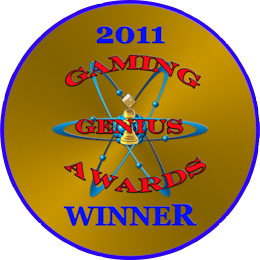I’ve spent three days playing a lot of fun games at LINCON, but as this blog is about role playing games and map making, I will focus on a game I bought that really caught my eyes, Operation: Fallen Reich.
Remember, these are my first reflections of the game, not a review.
I did see the life board last year, when the game was still in production. The life board is a jolly good system for O:FR (Operation: Fallen Reich) to creatively create playing characters that is the funniest, most entertaining way I’ve ever created a character. Believe me, after I bought the game, we spent almost one and a half hour making three characters each just because it was so fun.
The game is set in the pre or early second world war II era, about 1938-1940, in the Great Britain. Even though the game is written by a couple of Swedes, the game is very British, sometimes to a point that is almost silly, but that is very entertaining, they have a balance in the humorous touch in the game too.
The game is set in one of my favorite times, the late pulp era. It could be have been a Cthulhu game if the dark side was elder gods and not Fallens, but the same feeling, creepy evil lurks about. It is more of an Agatha Christie British murder mystery with a twist than it is Saving private Ryan, and more Indiana Jones than it is Guns of Navarone.
The game consists of two major pieces, the core rules and the life board. The life board isn’t mandatory, but it makes character generation almost as fun as playing the game.
What makes it different from most common RPGs is that there are no base stats, everything is skill based, and the mechanics is simple still elegant. The combat rules, written by one of the designers, an ex. military, was cut down from 60 pages to 16 pages by making the combat system simple, fast and still pretty accurate, borrowing, this is my personal opinion, some great ideas from the late RPG James Bond, one of the best modern based RPGs ever made.
It simply handles things like increased difficulty to fire at longer range, recoil and automatic fire in a way that outsmart every RPG-system I’ve ever read or played. And still it avoids the Role-Master or Advanced SquadLeader Syndrome, where every single attack needs multiple roles with multiple dice with multiple lookups in multiple tables and after 4 minutes of hard work you think you know what happened when you pulled the trigger twice of your Webley No. 1 revolver.
So, how is this simple? OK, the person is standing 10 yards away (a yard is approximately a meter, so even we who cannot use the imperial system can play the game), and the gun has a range of 2, you divide 10 by 2, getting 5. The GM adds 10 (basic chance of success in normal circumstances), and another 4 because the room is dimly lit, ending up with a total of 19. The Player roll a d20, rolls 16, adding his skill in Pistol, 5, to a total of 21. 21 is a hit. If the player had rolled a 20, he would be granted a second roll, and add the rolls together. A roll of 1 is aways a miss. But, instead of critical hits and failures, they have Jolly good rolls and Oh dear rolls. If the player had rolled first 20, the 17, the total had been 42. For every 10 over the required roll, the roll becomes a jolly good, in this case it would have been a jolly jolly good roll, which would inflict 2×5 more in damage, depending on weapon and some other things.
Damage is based on weapon plus a d20. You roll a d20, add damage, 5 for a Webely No. 1, which makes this attack to render 1d20 (7) plus 5, which is 12. The target, a German agent only have pain limit of 8, he is now stunned, trying to overcome the pain from the shot. 12 on the “damage table” says shoulder. The GM will probably say something like this: -“You hit the German agent in the right shoulder. He is pressing his left over the wound, moaning, and you see blod dripping between his fingers.”
Upcoming things are a GM Screen, and more adventures. There are already one free downloadable adventure on their site, Tennis, Terror and Tricky Birds, the name saying much about the atmosphere of the game.
There is also an adventure in the rule book, and the website have a lot of interesting information to help GMs get started. One thing that I do miss is a list of simple opponents, like guards, agents. Only the fallens and their different forms are explained. I having basic enemies like that would really speed up making of quick games.
They also have an scenario generator for the web, the iPhone, and for Android to quickly create plots, much like my own Pulpomatic.
So, what is the verdict so far? I’ve only test GM:ed the game for a couple of hours, but the two players said that this was the best event at the whole Lincon, so it is a good start. I recommend this game, it is jolly jolly jolly jolly good from what I’ve seen and read and played so far. Simple and elegant, if you like the pulp era with a demonic touch.
Did you know that Harry Houdini had a set of magical keys that he used to open those locks with, and a fallen found out and stole the keys, hitting him in the stomach, hard, to show Houdini that he was serious when he said, if you tell, you are dead.
It is that easy to come up with a plot that could expand to a full adventure.
Check out http://www.fallen.se/ for more information, the site is in English.
Comments
Leave a Reply
 Roleplaying
Roleplaying
